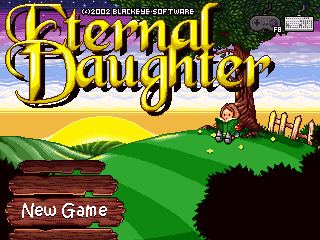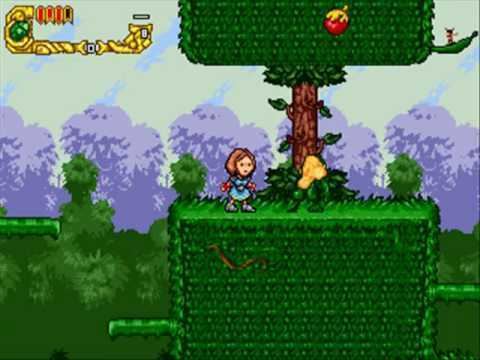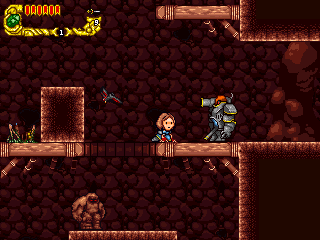Composer(s) David Saulesco Release date(s) June 21, 2002 | Engine Multimedia Fusion Initial release date 21 June 2002 Mode Single-player video game | |
 | ||
Publisher(s) Independent video game development Genres Action-adventure game, Metroidvania Similar Bike Banditz, Dark Angael, Betty Bad, Turma da Mônica na Terra dos, Gene Troopers | ||
Let s play eternal daughter episode 0 introduction
Eternal Daughter is a freeware action-adventure game created by amateur developers Derek Yu and Jon Perry and released on June 21, 2002 under the label Blackeye Software.
Contents
- Let s play eternal daughter episode 0 introduction
- Let s play eternal daughter episode 1 escape to lorian forest
- Plot
- Gameplay
- Music
- Reception
- Legacy
- References

Let s play eternal daughter episode 1 escape to lorian forest
Plot

The introduction shows the Dungaga, an imperial industrialized race, conquering the more spiritual Lorian. The protagonist, Mia, is daughter of the Lorian priestess and an unknown father. Like the rest of her people, she is enslaved to do menial labor, under the supervision of her half-brother Hume. As she sees her Dungaga stepfather Gar hit her mother, she manifests a light-based magic that she uses to strike down Gar. At her mother's advice, she flees the village.

In her travels, Mia meets the enigmatic lizard-like Shulin, the slime-based Grodol warriors, a familiar baby dragon named Elanduru, and several Dungaga dissidents. It is revealed that the Dungaga are controlled by the three sons of the dark god Baphomet, who wish to summon him into the world. After defeating the three sons, Mia must rally the free people of the world, and obtain the blessing of the five gods, to strike at Baphomet's realm and defeat him.
Gameplay
The gameplay of Eternal Daughter is based on a classic style of side-scrolling platform action, with added features such as secondary weapons and growth elements that are otherwise common in role-playing games: Items found throughout the game increase the strength of the player character's weapon or maximum number of health points. Also, as the game progresses, the player gains new abilities that can be used to explore areas of the game that were previously unreachable, progressively "unlocking" new locations within the game world.
Because of this combination of gameplay elements, comparisons are often drawn to Castlevania: Symphony of the Night and Super Metroid, popular console games that feature the same type of platform action combined with exploration-based adventure.
Music

A large part of the music was composed by Swedish video game composer David Saulesco. Like the game itself, the score uses a number of influences from famous video game soundtracks, most notably Final Fantasy VII. Eternal Daughter was Saulesco's first video game soundtrack, produced when he was 16 years old. The soundtrack was released on Saulesco's Bandcamp under the Creative Commons license CC by-nc-sa 3.0 on January 11, 2011.
Reception
Home of the Underdogs praised Eternal Daughter for its well-designed and smoothly animated characters, precise platform engine, and addictive non-linear gameplay. 1UP highlighted the game's unique visual style and level of polish not usually seen in freeware games. Both reviews commented on Eternal Daughter's harsh-but-fair difficulty level. In 2006, 1UP.com included Eternal Daughter in a list of the 101 best free games on the Internet. Metacritic has no user or critic reviews for Eternal Daughter.
Legacy
As the game received no official updates for years, the game's community took up the burden and reverse engineered the game to fix the most pressing issues, like a MIDI playback bug and the problematic hard-coded resolution of 320x240.
